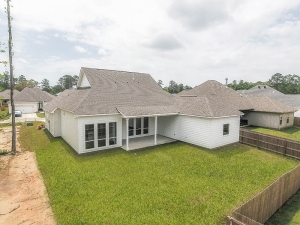
It is very important to understand what a property setback and how it can affect the home building process. This article will establish all you need to know about property setbacks.
What is a property setback?
A property setback is the distance required between your house and your property line. There are many things that will define the setbacks on your property such as the type of building, the property's shape, the reason you are using the lot, its height and its size.
“Property setbacks are the building and land use restrictions placed on parcels of property long before you bought it,” says Mike Powell, an engineer and certified home inspector in Tampa, FL. “These setbacks are put in place by city engineers when designing the parcels and common elements needed to subdivide the larger piece of land into smaller, more divisible units.”
Why setbacks are important
Setbacks are great for a homeowner and their neighbors allowing all parties to live comfortably. Setbacks can give ample space to replace or repair utilities and allow for first responders to have enough acess for emergencies. Other advantages are natural lighting, venilation, noise pollution and improved aesthetics.
“Setbacks ensure the functionality of the residence,” says Greg Covell, a Realtor with Re/Max Select Realty in Vancouver, British Columbia.
How to find out your home's setbacks
This is crucial when it comes to purchasing a piece of property to build on. Before you put in an offer, find out what the governing setbacks are for the property. Do your due diligence by contacting your town orr municipality or your local planning department.
“I had a sale pending the zoning approval of placing a barn outside the setback lines,” Denise Supplee, a real estate agent and founder of SparkRental.com says. “The zoning board gave a big no, and the property deal ended without a sale.”
Can a homeowner challenge setbacks?
Setbacks are not supposed to be a burden but rather a benefit for the community. These rules and regulations allow everyone to live comfortably with privacy. There are exepctions to the rules when it comes to setbacks. A homeowner can request an exception but it will more than likely involve a public hearing where neighbors can support it or oppose it.
“Obviously, engineers are incapable of fully anticipating future use, so setbacks may change over time,” says Powell. “For instance, a railroad line that has been abandoned for over 40 years may have been given a setback. The municipality may allow a variance to allow construction of your shed in the former setback location.”
What happens if you build on a property setback?
Just like any other law or ordinance it is against the law to ingore them. A homeowner that builds a structure on a setback will result in removing the structure at the homeowner's expense.
“If it happens to be a fence or a light structure, it may not be a huge problem,” Powell says. “If that building happens to be a reinforced concrete structure, the owner will have to swallow the expense of demolition and likely face additional fees or fines.”
No comments:
Post a Comment